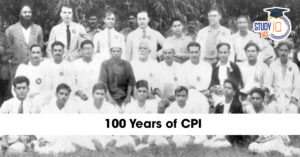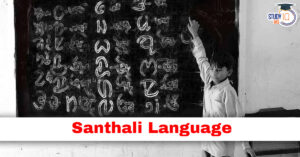Table of Contents
Context: The long-awaited report of the Rohini commission that was set up to examine the sub-categorisation of Other Backward Classes (OBCs) was submitted to the President recently.
More on News
The Rohini Commission:
- The Justice G Rohini Commission, headed by Justice G. Rohini, a retired Chief Justice of Delhi High Court, was appointed on October 2, 2017.
- The commission was established to address perceived distortions in the affirmative action policy related to Other Backward Classes (OBCs) in India.
- The affirmative action policy in India includes a reservation system that grants certain percentages of seats and jobs in government institutions and educational institutions to individuals from socially and educationally backward communities.
Need for Subcategorization of OBCs:
- The need for sub-categorization of OBCs arises from the desire to ensure equitable distribution of the reservation benefits among different OBC communities.
- The 27% reservation for OBCs was intended to provide opportunities and representation to historically marginalized and disadvantaged communities.
- However, over time, it was noticed that only a few relatively affluent OBC communities were benefiting significantly from this quota, while many others remained underrepresented and did not enjoy the full benefits of reservation.
- Thus, the idea of subcategorization was to create further classifications or sub-quotas within the overall 27% OBC reservation, so that the less privileged and more marginalized OBC communities get a fair share of the opportunities.
- Sub-categorization would allow the government to allocate specific percentages of the OBC quota to different groups within the OBC category based on their social and economic backwardness.
- This is expected to ensure that the benefits of reservation are distributed more fairly and effectively reach those OBC communities that have historically remained deprived of educational and employment opportunities.
Terms of reference of the Justice G Rohini Commission
- Examine the extent of inequitable distribution of benefits of reservation among the castes or communities included in the broad category of Other Backward Classes (OBCs) with reference to such classes included in the Central List.
- Work out the mechanism, criteria, norms, and parameters in a scientific approach for sub-categorization within such OBCs.
- Take up the exercise of identifying the respective castes or communities or sub-castes or synonyms in the Central List of OBCs and classifying them into their respective sub-categories.
- Study the various entries in the Central List of OBCs and recommend correction of any repetitions, ambiguities, inconsistencies, and errors of spelling or transcription.
- The initial tenure of the commission was 12 weeks, ending on January 3, 2018, but it received repeated extensions.
- In 2019, the commission wrote to the government expressing the need for clarifications and rectifications in the list before proceeding with sub-categorization.
- Consequently, in 2020, the fourth item was added to the terms of reference to address the corrections and ambiguities in the Central List of OBCs.

Preliminary Findings of Rohini Commission
The Commission analysed the data of 1.3 lakh central jobs given under OBC quota over the preceding five years and OBC admissions to central higher education institutions (including universities, IITs, NITs, IIMs and AIIMS). The findings were:
- 97% of all jobs and educational seats have gone to just 25% of all sub-castes classified as OBCs.
- 95% of these jobs and seats have gone to just 10 OBC communities.
- 983 OBC communities (37% of the total) have zero representation in jobs and educational institutions.
- 994 OBC sub-castes have a total representation of only 2.68% in recruitment and admissions.

Challenges before Rohini Commission
- Lack of Data: The absence of data for the population of various communities to compare with their representation in jobs and admissions.
- Lack of Survey: The Commission had written to the Ministry of Social Justice and Empowerment in 2018 to request an appropriate Budget provision for a proposed all-India survey to estimate the caste-wise population of OBCs.
- Reluctance of Government: In 2018, the Home Ministry had announced that in Census 2021, data of OBCs will also be collected, but since then the government has been silent on this.
Understanding Backward Classes and OBCs
Backward Classes in India
- The backward classes are not defined under the Indian Constitution, but they refer to economically and academically underprivileged individuals compared to other social groups.
- The Backward Classes suffer from disadvantages and disabilities which are age-old, and which derive their sanction mainly from the caste system.
- Low status, poverty and illiteracy are social problems, which they have inherited due to their ascribed status of being born in a low caste or tribe.
- The backward classes comprise roughly one-third of the total population in India. They are made up of:
- The Scheduled Tribes (Adivasis)
- The Scheduled Castes (the Harijans)
- The Other Backward Classes
- The characteristics of backwardness are mentioned in different articles of the Indian Constitution:
- Article 15 (4) speaks of social and educational backwardness.
- In Article 16 (4), mention is made of backward classes and their inadequate representation in services.
- Article 23 speaks of forced labour.
- Article 46 refers to weaker section of the people in which the scheduled castes and scheduled tribes are included.
Who are Other Backward Classes (OBCs)?
- Other Backward Classes (OBCs) comprise the so called ‘non-untouchable’, lower and intermediary castes who were traditionally engaged in agriculture, animal husbandry and handicrafts services.
- As per the Indian Constitution, they are socially and educationally backward classes.
- Article 340 gives the President the power to constitute a committee to investigate the conditions of backward classes in India and recommend measures for their welfare, upliftment, and development.
Reservations for the OBCs
- Protective Discrimination: The constitution makers made special provisions for the upliftment of the backward classes in the form of protective discrimination. The policy of reservation is an instance of protective discrimination.
- First Backward Classes Commission (1953): The Government under Jawaharlal Nehru appointed a commission under article 340 to identify backward classes other than the SCs and STs at the national level. It was headed by Kaka Kalelkar.
- The Commission submitted its report in 1956 and recommended that caste is an important measure of backwardness.
- The recommendations were rejected by the Union government as they failed to apply more objective criteria such as income and literacy.
- Second Backward Classes Commission (1978): It was appointed by the Janta Party Government in 1978 under Article 340.
- This Commission known as Mandal Commission submitted its report in 1982.
- It identified 3943 castes as OBC and recommended 27% reservation in government and semi-government jobs and admission to educational institutions.
- In 1990, the Union Government headed by V.P. Singh issued an office memorandum extending 27% reservation to the OBCs on the lines recommended by the Mandal Commission.
- The memorandum provided reservation for Socially and Educationally Backward Classes (SEBCs) of 27 % of the vacancies filled by direct recruitment in civil posts and services under the Union Government, PSU’s and Financial Institutions.
- A number of writ petitions were filed in the Supreme Court questioning the said Memorandum along with applications for staying the operation of the Memorandum.
- Issue of Creamy Layer: The Supreme Court examined this issue and gave a landmark judgment in Indra Sawhney vs Union of India Case (1992).
- The SC permitted the Union Government to reserve 27% of the jobs for the OBCs subject to the exclusion of the ‘creamy layer’ among the OBCs.
- A person with an annual income of ₹8 lakh and above is classified as “creamy layer” and cannot get the reservation benefits.
- The SC permitted the Union Government to reserve 27% of the jobs for the OBCs subject to the exclusion of the ‘creamy layer’ among the OBCs.
National Commission for Backward Classes
- It is a body set up under the National Commission for Backward Classes Act, 1993.
- 102nd Constitution Amendment Act, 2018 provides constitutional status to the National Commission for Backward Classes (NCBC).
- It has the authority to examine complaints and welfare measures regarding socially and educationally backward classes.
- Previously NCBC was a statutory body under the Ministry of Social Justice and Empowerment.
Way Forward
- It is impossible to conduct an accurate sub-categorisation of Other Backward Classes groups without some form of a caste census.
- The Rohini Commission must incorporate the data from the last Socio-Economic Caste Census (SECC) conducted in 2011.
- The sub-categorisation of OBCs can ensure the maximum reservation going to caste groups that have been historically crowded out and minimum reservation for the dominant caste groups.


 100 Years of CPI: Origins, Ideology, Fre...
100 Years of CPI: Origins, Ideology, Fre...
 Santhali Language: History, Script, Cons...
Santhali Language: History, Script, Cons...
 How African Reserves Eliminated Rhino Po...
How African Reserves Eliminated Rhino Po...

























